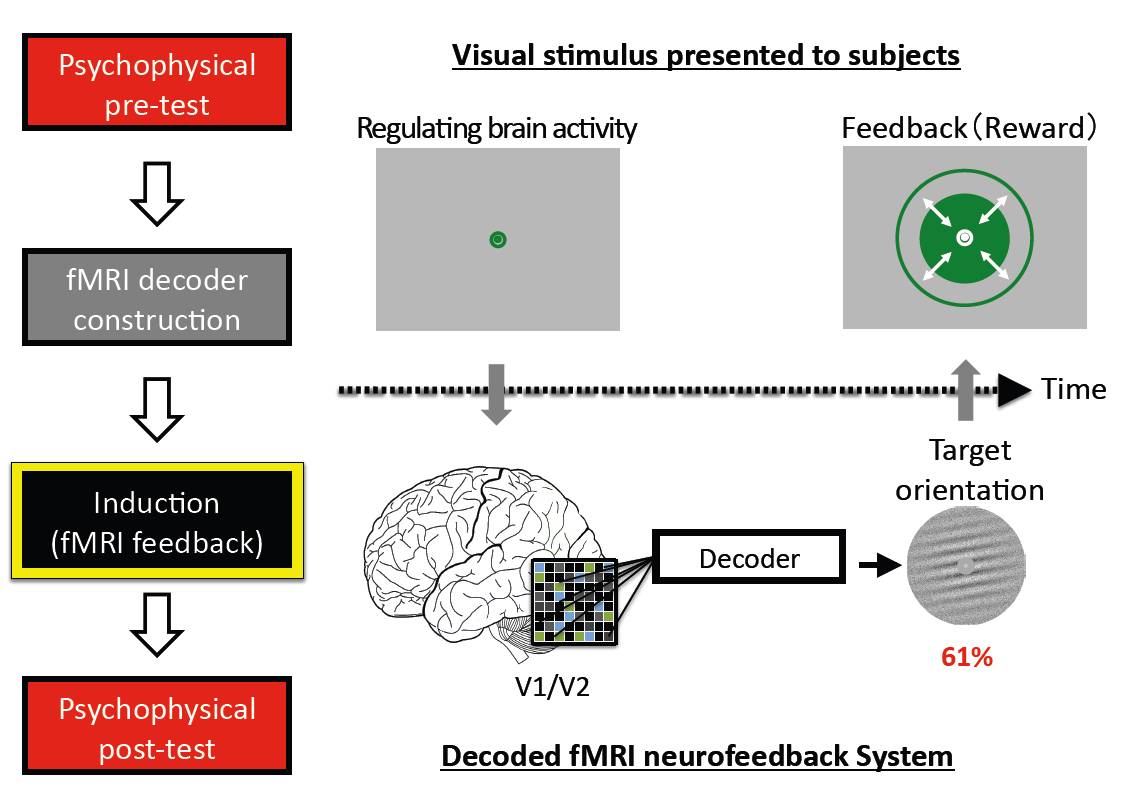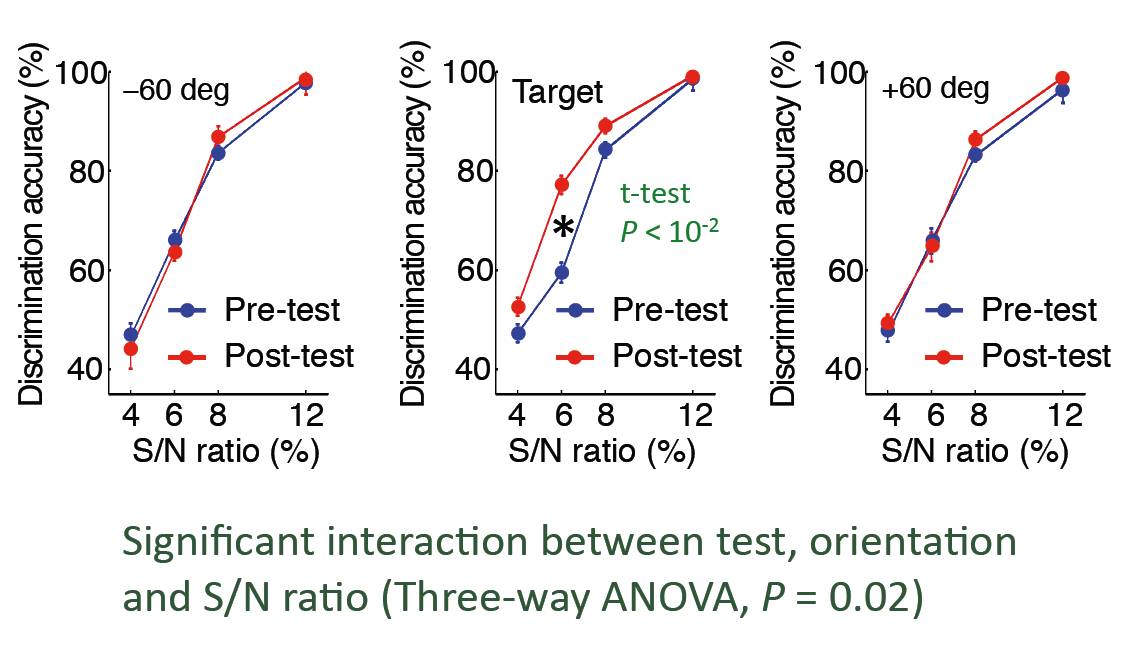Research
Perceptual Learning Incepted by Decoded fMRI Neurofeedback Without Stimulus Presentation
We found that repetitive inductions of a particular activation pattern in human early visual areas lead to visual performance improvement to a specific visual feature (so-called visual perceptual learning). This result indicates the cause-and-effect relationship between a pattern of neural activities (cause) and visual perceptual learning (effect). Previous physiological and neuroimaging studies compared neural activities before and after perceptual learning training. These approaches only revealed correlation between neural activity and learning; it was impossible to conclude whether neural activities in a particular brain area are cause or effect of learning. We found that repetitive inductions of a particular activation pattern in human early visual are sufficient to lead to perceptual learning and settled the debate whether early visual areas of human adults have enough plasticity to allow for perceptual learning.
Figure 1:Perceptual learning incepted by decoded neurofeedback training without stimulus presentation and awareness
Subjects were asked to regulate activation in a posterior part of the brain during which a central fixation point turns in green. After several seconds, the subjects were provided a green disc as feedback. The size of the green disc reflects likelihood of a particular target orientation which was calculated based on measured activation pattern. The subjects were asked to maximize the size of the disc as large as possible.
Figure 2: Discrimination performance improved specifically for the target orientation which was used during neurofeedback training.
Before and after neurofeedback training, we compared subjects’ performance in an orientation discrimination task. The X axis represents task difficulty, and the Y axis represents discrimination performance. Blue and red indicates performance before and after neurofeedback training, respectively.





